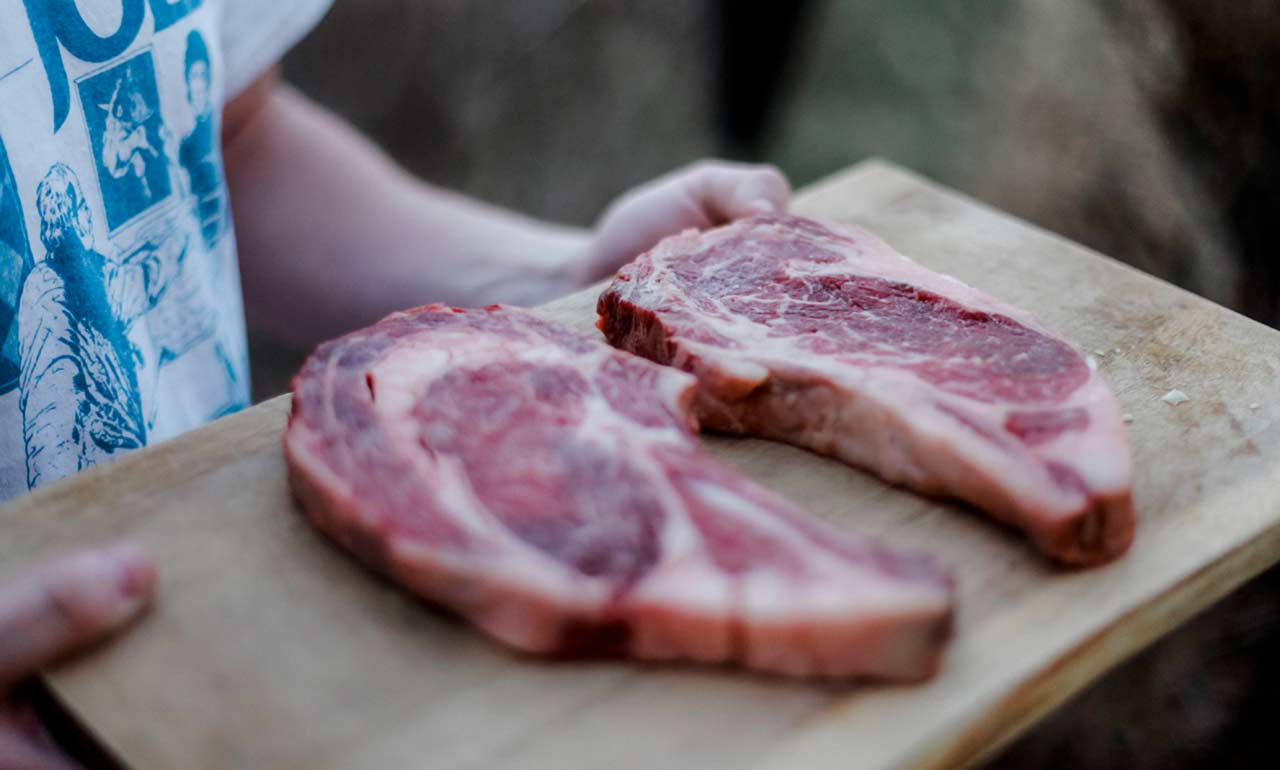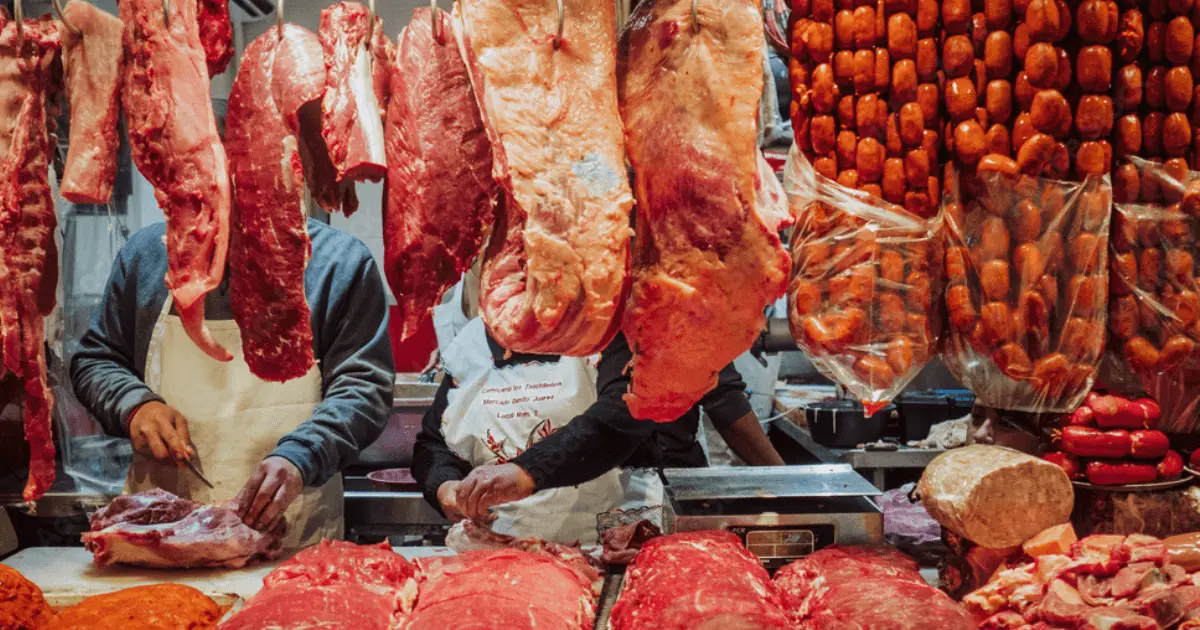Why Residents Love Bagley Farms Meat Market Edwardsville IL for Their Meat Shopping
Why Residents Love Bagley Farms Meat Market Edwardsville IL for Their Meat Shopping
Blog Article
Uncover the Art of the Butcher's Cut in a Modern Meat Market
In the ever-evolving landscape of modern meat markets, the butcher's cut has transcended its typical roots, combining old-time workmanship with modern practices. What truly establishes the modern-day butcher apart is their capacity to forge a deeper connection between consumers and the origins of their meat.
Evolution of Butchery Strategies
The development of butchery techniques shows a rich tapestry of advancement and adaptation driven by innovations in modern technology, modifications in consumer demand, and a much deeper understanding of meat science. Historically, butchery was a craft passed down via generations, with techniques honed over centuries to maximize return and taste. The industrial revolution ushered in mechanization, transforming typical methods and enabling large-scale handling.
The mid-20th century saw butchery methods better fine-tuned by clinical insights into muscle biology and meat aging, boosting both inflammation and taste. Innovations like vacuum cleaner product packaging and refrigeration extended item shelf-life, permitting butchers to branch out offerings and enhance quality assurance. This period likewise noted the rise of specialized tools, such as band saws and meat slicers, which increased accuracy and performance in meat handling.

Digital systems currently assist in tracking pet provenance and enhancing cuts to fulfill details consumer preferences. Furthermore, a revival in artisanal butchery has emerged, blending standard skills with modern expertise to provide to consumers looking for ethical and lasting meat alternatives.
Understanding Meat Cuts
Recognizing the ins and outs of meat cuts is crucial for both butchers and consumers seeking quality and worth. For butchers, accurate cuts mirror skill and respect for the craft, ensuring minimal waste and optimum yield.

Recognizing muscle make-up is important; muscle mass made use of a lot more frequently by the animal tend to be tougher and are best suited for slow-moving food preparation methods, while less-used muscle mass, like those located in the loin, are extra tender and perfect for grilling or roasting. Knowledge with these differences empowers customers to make enlightened choices, boosting their culinary undertakings.
Selecting High Quality Meat
Choosing the ideal meat includes more than simply picking an aesthetically attractive piece from the screen. bagley farms meat market edwardsville il. The art of picking top quality meat needs a critical eye and understanding of particular characteristics that represent quality and excellence. First of all, focus on the color; beef must have an intense, cherry-red tone, while lamb ought to display a soft pink tone, and pork a light pink. This shows the meat is fresh and hasn't been subjected to oxygen for also long.
Second of all, think about the marbling, which describes the white flecks of fat within the muscular tissue. Proper marbling is an essential indication of tenderness and taste, as it thaws during food preparation, boosting the meat's juiciness. Remember, higher marbling often associates with superior top quality cuts, such as USDA Prime.
Structure is an additional important variable; meat must really feel solid to the touch, not slimy or extremely soft. In addition, be conscious of the fragrance. Fresh meat must have a clean, neutral scent, without any type of sour or off-putting smells.
Pairing Cuts With Cooking Techniques

Alternatively, harder cuts like brisket and chuck roast are abundant in collagen, which damages down into jelly when cooked gradually. These cuts are optimal for braising or sluggish roasting, allowing the meat to soften over time and create deep, complicated flavors. Cuts such as brief ribs and pork shoulder get on well with slow-cooking techniques, where prolonged cooking times change their durable appearances into delicious dishes.
Lamb shanks discover here and oxtail, which call for prolonged food preparation to tenderize, are ideal prospects for stewing or slow simmering. These techniques coax out rich, hearty flavors while maintaining moisture. By comprehending the special attributes of each cut, chefs and home cooks alike can boost their cooking productions, making sure each recipe is both satisfying and memorable.
The Butcher's Function Today
Browsing the evolving landscape of the modern-day meat market, the butcher's role today prolongs beyond mere preparation of cuts. Contemporary butchers are cooking craftsmens, instructors, and advocates for sustainable techniques.
In addition to crafting specific cuts, butchers now engage directly with clients, supplying cooking suggestions and customizing selections to fit individual needs and preferences. Their expertise in meat aging, marbling, and taste accounts encourages customers to make educated decisions, improving their culinary experiences. This personalized solution exhibits the butcher's progressing duty as a trusted expert in the kitchen area.
Furthermore, butchers are essential in reducing waste, using entire animals to develop varied products such as sausages and stocks. This thorough technique not just respects the pet but likewise lines up with contemporary sustainability objectives. This way, the modern-day butcher embodies useful link both tradition and technology, adapting to an ever-changing market while maintaining the virtuosity and stability of their craft.
Verdict
The modern butcher's craft delicately weaves typical strategies with modern-day technologies, highlighting sustainable techniques and honest sourcing. Mastery in understanding varied meat cuts and top quality indications equips butchers to give enlightened referrals, straightening details cuts with ideal food preparation methods. This knowledge not just raises culinary experiences however also strengthens the connection between customers and the origins of their food. By recognizing historical practices while embracing contemporary demands, the butcher's function continues to be important in today's sophisticated meat market (bagley farms meat market edwardsville il).
Report this page